Oh boy, we've got a LOT of new products this week! We've got some long-awaited new revs, customer-requested products, and even some new cool sensors. Check out the video below for a full explanation of the new sensors and a little bit more about the manufacturer, Atlas Scientific.
Vimeo version found here.
It's really cool seeing some guys that had a problem they needed to solve do so by being innovative and coming up with simple solutions. We would like to point out that these are not hobby-grade sensors, but are up to the task of being used in laboratory settings. If you need some stuff that's more accurate than hobby-grade, and don't want to spend the time to make your own custom sensors, these guys have figured it out for you.
First up, we've got a new revision to the Retail SIK (SparkFun Inventor's Kit). The retail version is the one that comes with the fancy plastic box that stores all the components as well as the manual. We've revamped a lot about this kit and it's the best one we've made (so far). The new case does away with the old snaps and now uses hinges and locking tabs. Now you can easily reuse the case without worrying about the tabs breaking off. Additionally, we've added a compartment at the bottom to store the manual. So, lift open the top to reveal all the electronic goodness that is the SIK, flip it over and open the bottom to reveal the manual, or whatever else you want to put in there. We've also revised the manual and all the code to be more consistent and easier to use. All these changes have come from numerous classes and teaching the SIK in various parts around the country. We hope you enjoy the changes. And if you're new to Arduino and want to start learning what it's all about, there's no better time than now to get an SIK.
Now that we have the new cases in, we can start selling them separately for all those who just want to use it for parts storage. As I described above, we've redesigned the case to be more user-friendly and useful over time. The parts storage is largely the same as the last one, but now has an additional compartment in the bottom for a manual, papers, or whatever else. More pictures coming soon!
Moving on to all the new sensors and such from Atlas Scientific. First up we have the small flow meter kit. This kit gives you everything you need to accurately measure flows from 800ml/minute up to 7.5LPM. The kit consists of a flow meter, pre-filter (you don't want to clog your flow sensor, right?) and a little board which accurately translates the data into a basic serial string that can be read by a microcontroller or your computer. The accuracy of the kit is about ± 1mL/min.
The electrical conductivity kit gives you all you need to measure electrical conductivity of water, therefore telling you the salinity and total dissolved solids. The kit includes a probe, solutions to calibrate your probe, a BNC connector, small breakout for the connector, and a little board that interprets the information and gives you accurate data, instead of just voltage.
Want to measure dissolved oxygen in water? We've got a kit for that now. The DO kit gives you a probe, breakout, connector, and a board that translates the values for you. Additionally, it includes a bottle that lacks any dissolved oxygen, so you can get a baseline reading from the probe to verify accuracy. As with all these kits, the board just spits out values over serial so you can easily log or read them.
And the last sensor we have from Atlas Scientific is the Color Detector Sensor. It's similar to our color light sensor breakouts, but much of the heavy-lifting has been done for you. The whole unit is completely weather sealed for submersion or embedding out in the elements. Also, the unit outputs real world values as 0-255 of R, G, and B. It will easily allow you to measure what color the unit is pointed at, and can also measure the LUX (brightness) of each color as well.
Lastly, we've got a simple data logger. This data logger was born to be embedded. By just using solid state memory, there's no SD card to fail or change out (or lose!) so you can just fully seal it into an enclosure. It's small and when fed plain text, can hold quite a bit of data. If you have an application where you don't want to mess with the variable of an SD card, check out this simple logger.
Next up, we have this 4xAA battery drawer. It holds 4 AA batteries and can be panel-mounted and screwed in place. There's a 'drawer' the slides out for changing the batteries. No more taking your entire project apart just to change out the batteries!
The TransmorgiShield was actually a product that we had on the site a couple weeks ago, but I forgot to talk about it! It's a simple shield, but solves a very real problem. It allows you to use all our old shields with the new Arduino Leonardo. The Leonardo moved the SPI and I2C pins, which made it incompatible with all the old shields. The TransmogriShield is a go-between the corrects this.
When we came out with the TransmorgiShield, people were interested in the SMD headers on it. If you want it, you got it. I said we'd carry these headers and here they are. We've got the male SMD headers in 6-pin, 8-pin, and 10-pin. They use a staggered footprint and are in the SparkFun Eagle Library for easy use.
Additionally, we've got the female versions as well! We've got these in 6-pin and 8-pin to work with your older Arduino boards that have just 6 and 8 pin headers on them. They work the same way with a staggered right-angle footprint, also in the SparkFun Eagle Library.
And lastly, but certainly not least, we have a new breakout for the HIH6130 humidity sensor. The HIH6130 is a digital output-type relative humidity (RH) and temperature sensor combined in the same package. This allows the RH measurement to be temperature compensated and provides a second, standalone temperature sensor output.
Phew! That was a lot of new stuff. Hopefully there's something in the list that's making you feverishly add to your cart. If not, there's always next week. I've got to get working on the huge batch of stuff for next week too! Thanks for watching and reading and we'll be back next week with even more goodies. See you then.
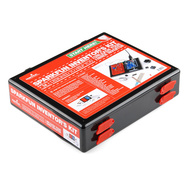
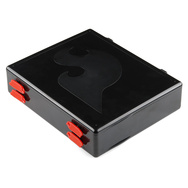

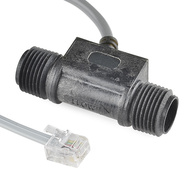
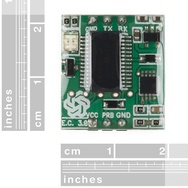


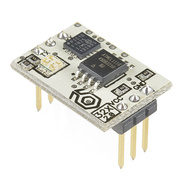
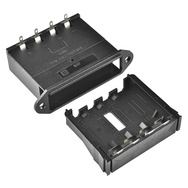

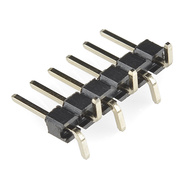
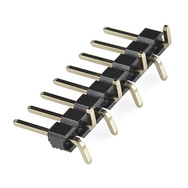

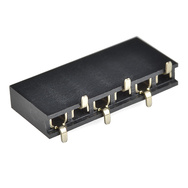








Atlas' new website is nice. I'm happy to see Arduino examples for all of their probes; smart move to cater towards hobbyists. Sparkfun: Atlas has a nice serial multiplexer for $5. That might be something good to stock.
I saw the multiplexer also. Like the way they use it with their products. I'm going to build my own to play with!
Robert, please don't have guest speakers. They're not very good. I really don't care why they were told to make something. Stick to the point. I wanna know what you guys have, how it works and that's it. Let me figure out what to do with it.
I disagree.
Have you ever wondered why the transistor exists? Or why there there are thousands of variations of transistors out there?
I recommend keeping guest speakers for the reason of that they are an inventor/engineer/hobbyist who was given a problem to solve, and they found a way to solve it. Plus, by having the guest speaker there allows you to see some basic examples of potential uses. Remember, they're an expert in their products/field and it's always good to learn from them.
Fair enough. The point in having them talk was that this stuff does exist, but it is outside the reach of the average user. They have very affordable stuff (when compared to professional equipment) and we thought it would be a good idea to mix things up and have them talk about it.
The videos tend to be geared more towards demonstrations, where the text portion of the post is more for just finding out the new stuff and how it works.
There are other open source options available if you would look around, one option is a city over from you guys :)
Link?
Sure thing, I'd be more then happy to bring some by for you guys to play with too. LeoPhi pH interface/controller and the result of a collaboration with ManyLabs/Wiregarden with some more on the way! I2C pH interface
Hum, $30 versus $28 and no option to buy a probe?
You shouldn't compare the 2 units like that, at least not without including the specs too.
For $2 more you get a hell of a lot more capable pH sensor, know how and why it works and can verify the calculations or even use your own. On top of that you can use any old pH probe you want, not "restricted" to an overpriced one. I may carry them at some point, but there are some great buys already out there. I would also rather put my very limited resources towards more sensor types at this point.
LeoPhi at its heart is an Arduino, it started a few years ago as a simple atmega168 but grew into its big brother today. The USB features of the 32u4 spurred the latest revision and gives people the ability to simply plug it in and read pH, it really doesn't get easier than that. Works on Raspis, hacked wifi routers(that $20 one, oh yeah!!), just about anything with a USB port. For ~$80 you can have a wifi pH meter/controller (probe, LeoPhi and a TL-WR703N) something the Atlas unit simply cant do. Pretty much the reason why it exists.
I really wish I could sell it cheaper but I am just one man with a full time job trying to support my passion, In fact I am finishing a batch of units to donate and need to pick up some stuff from you guys to finish, funny how that works. (Which leads into the 2nd design)
As an FYI, I have spent years researching, creating/failing, failing some more and finally succeeding, in creating open source water quality sensors. I hope to help create a safecast type system and increase the quantity and quality of monitoring, the new unit is geared for this and is significantly cheaper, with more to come.
I really encourage you guys to take some units and mess around with them, what do you have to loose? Besides supporting your customers and fellow OSHW makers is a good thing.
Good stuff. I will add one point. We actually had the pH sensor tested in a large water quality lab and it passed QC up against a $1000 pH sensor. Both read pretty much identically. Call it overpriced if you want, but it does perform well.
If you're local, you can always contact us and talk further about your products.
I was actually referring to the probe, as there are some good buys even food grade out there. I have no doubts about the performance of their unit, standard proven design and I'm sure their algorithms are spot on to boot! In the whole scheme of things they are pretty reasonably priced, but they are not unique which I thought I would point out, for those that wish to support open source. I have a handy tutorial showing how this all works, even commercial meters are similar :)
I would be more then happy to meetup and explain it all and show off some of this stuff, who should I contact?
You can contact me, robert.cowan@sparkfun.com
Feel free to skip ahead on the videos.
RS232 suitable for long distance communications? O_o I don't agree with this one. Unless "long" is a few meters.
Hello, I'm afraid there are 2 big mistakes in this video. RS232 being one ... and the other being about interrupts. Hell no you don't have to use another MCU for each RPM you want to measure ! Never heard of input compare ? Don't know if it exists on Arduino but it is available on any average MCU in the market nowadays. I'm sorry but these 2 mistakes make me doubt on the legitimity of the guest. Probably would have been better with Rob only. But that doesn't mean guests are not welcome - in my opinion - just try to get more technical guys and less marketing guys. Thomas.
RS232 can go up to 1,00 feet. http://en.wikipedia.org/wiki/RS-232
Sam
Agreed - RS232 is not recommended over 15m - it's much better to use RS422 or RS485 because they use balanced (differential) data lines. (Each TX/RX line has a positive and negative signal, so the net magnetic flux produced is ideally zero. This means they not only don't produce much EM noise, they're also more immune to receiving noise)
I'd be interested in seeing what multiple RS232 lines in conduits over long distances looks like - I suspect there'd be a fair bit of noise transmitted.
I have an application where we need very reliable somewhat long distance wired communications. We are using RS422 for this reasons, namely you get fewer ground reference problems thanks to the balanced differentials.
"..The accuracy of the kit is about ± 1mL."
Per second, I presume? Flow being a rate, not a volume, of course...
I'm sorry I have to agree with several of the previous comments: This guy doesn't seem to know what he is talking about. No "real world" engineer would spec RS-232 for long distances (-vs- say RS-422/RS-485 or some form of "current loop"). Also, using interrupts, or software polling, to measure timing periods is almost never the correct way to go (with the exception of some specialty DSP's) - at least if you care about accuracy. There is a very good reason that virtually all modern micro-controllers include input timing capture/compare hardware support!
SparkFun, please try to get folks that are technically savvy for future presentations, spreading bad information around does a big disservice to the folks just learning this stuff - not to mention reducing your credibility with the folks that already know it...
You do realize the term is transmogrify? Considering morgi means dogfish, I hope the intent was not to refer to a dogfish that is unhappy about is apparent gender.. perhaps it is an inside joke, referring to a party where an employee traversed a buffet table chasing a dog that had stolen the last piece of fish?
Or it's a typo. See the product page.
I have not seen a person talk this much crap. the way this guy talks is like he invented the sensors. They designed an algorithm to interpret the data and the guy exudes arrogance. I prefer Sparkfun posts by Robert, all by himself, to the point and no BS.
hi, the new products are great however i have a suggestion: Please put out a Cellular module that is compact and NOT in arduino form that we may integrate into our projects. Like a BlueSmirf but of "QuadbandcellularGMSSMS3GSuperInternationalCommunicationVirtual WireRemoteMonitoring" Glory.
thanks!
Hi, I was wondering if you saw the new Freescale Freedom development platform, and if you do… are you planning to sell this? It is well compatible with much of the Arduino boards (I would think all of them but I’m not sure) and well, you know, a 32 bits Microcontroller with full speed USB and an accelerometer, a touch pad and that costs 13 dollars I think is very attractive. I would love to see this board working with your awesome Arduino boards. http://www.freescale.com/webapp/sps/site/prod_summary.jsp?code=FRDM-KL25Z
Hey Robert- your HD video was flicking all through the video. It was very distracting.
ALSO What's with youtube no longer letting your customers maximize the screen?
And How long is the cord on the electrical conductivity kit ? What happens if you need it longer?
Like the new case, but I liked the original clear breadboard better. Buddy just ordered a SIK last week and got the 'old' version in on tuesday, oh boy is he going to be pissed. :P
I agree with jakkjakk's comment about guest speakers. This one was kind of like listening to a used car salesman.
I will say this. I was there when this was being recorded, and not everyone comes across the right way on video. Jordan's a cool dude and with cuts and an unscripted video, it's hard to show what they'd done and how cool it is, without coming across too sales-oriented.
It took you some weeks or months to "come across the right way on video", not a lot of people can improvise it. Jordan is probably a cool dude, but cuts every 2 seconds, moving all the time, bad mic, technical speech not prepared enough ... there is no shame in saying "ok we tried but the result is not on par with what was expected, we'll just do it the normal way, sorry". Thomas.
I fully agree. But a the same time, I felt the bulk of the content came across fine.
But yeah, we will probably not be tackling this again in the near future without more preparation ;-)
I actually appreciate the impromptu. As your company continues to grow, you'll see more critics sway you in the direction of complete 'professionalism'. To be clear, I can shop elsewhere, but I come here because I believe I'm supporting a group of people who love what they do, are not afraid to make a mistake and are free form. I'm not swelling some greedy CEO's pockets, I'm supporting the group of genuinely passionate peeps. This guy did sound pretty salesman type, but he's original, he's passionate and he's contributing... cheers to you! Case in point, when you guys posted MicroRax on your site, I noticed they're in my neck of the woods... I went down and toured their shop. They're two brothers with sweet ideas. It would have been great to have had one of them on here.
Hello, I don't think it's all about professionnalism or getting things ultra polished, etc. We all are geeks are, and Jordan's speech was too much marketing and not enough technical, if he is the guy that has developed this stuff, then just talk about it, how it works, etc, not why we should buy it. I like Sparkfun because there is no marketing involved, just products that you need/want or don't. Thomas.
damn, the beard is getting big. Looks like a bear is sitting on your face. Nice job buddy!
hey, if you've got it, flaunt it right? but seriously, at this point it's just to see how big it can get. for, you know, science...
Excelent new products. Congratulations!!!
"Tapwater from SparkFun"...I have searched the catalog and don't see it there. Is this a new product that you will have up soon?
If you want, I'll send you a zip-lock baggie of water.
I bet the shipper love you Robert! Do you guarantee that the package gets to the customers dry?
Sure. baggie inside a baggie, with some peanuts. easy ;-)
Free water by the baggie? Sounds like a screamin' deal.
Those Pin Headers are interesting! Who invented them? Great post!
That was us. We invented them.
What happened to Jordan's lapel mic? His voice is clearly coming from some other mic in the room.
I think it's functional, just a little low on his shirt. When he leans back he gets clearer, lol.